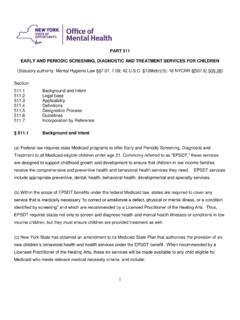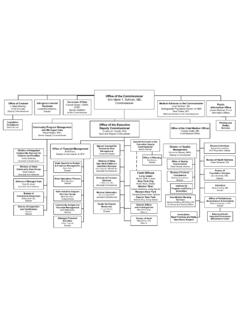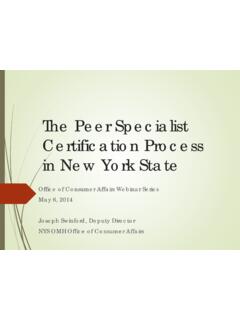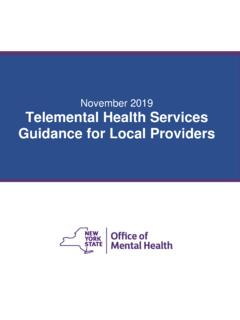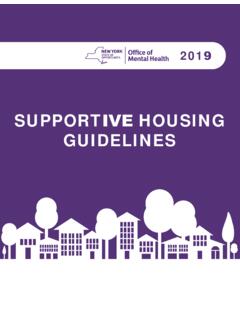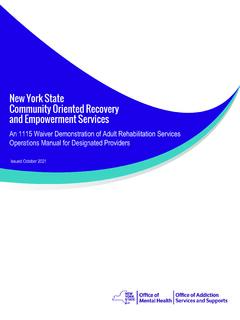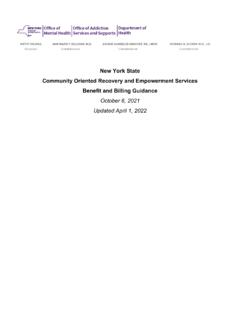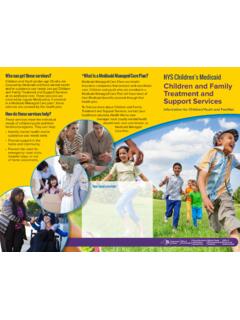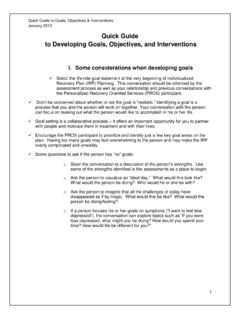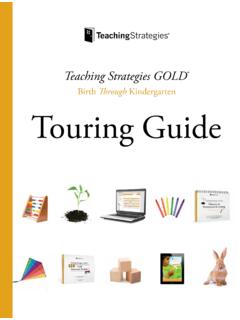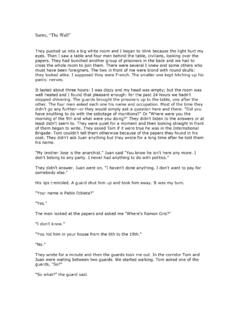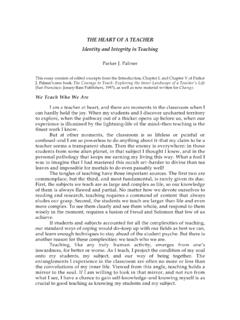Transcription of Grief Counseling Resource Guide - New York State Office of ...
1 Grief Counseling Resource GuideA F I E L D M A N U A LNew York StateOffice of Mental HealthSharon Carpinello, RN, Counseling Resource Guide A F I E L D M A N U A L New York State Office of Mental Health Sharon Carpinello, RN, Commissioner A F I E L D M A N U A LGrief Counseling Resource GuideNew York State Office of Mental HealthBureau of Education and Workforce DevelopmentAuthorsSpecial Thanks To:A F I E L D M A N U A L Grief Counseling Resource Guide New York State Office of Mental Health Sharon Carpinello, RN, Commissioner Bureau of Education and Workforce Development Deborah Wagoner Director Joe LeViness Project Director Authors Susan Wheeler-Roy, Bernard A. Amyot, , Special Thanks To: Gail Meehan Ann Cohan Copyright 2004 by New York State Office of Mental Health. All rights reserved. Table of Contents IInnttrroodduuccttiioonn.. iiiii iSSeeccttiioonn 1 1.
2 1 1 Bereavement Counseling A Framework SSeeccttiioonn 2 2 .. 3 3 Helping Skills for the Outreach Worker SSeeccttiioonn 3 3 .. 6 6 Personal Impact of Grief SSeeccttiioonn 4 4 .. 9 9 Sudden Death Loss Issues SSeeccttiioonn 5 5 .. 110 0 Secondary Loss Issues / Adaptation Strategies SSeeccttiioonn 6 6 .. 113 3 Rituals SSeeccttiioonn 7 7 .. 115 5 Gender Issues in Bereavement SSeeccttiioonn 8 8 .. 117 7 Care for the Caregivers BBiibblliiooggrraapphhy y .. 118 8ii Introduction This manual has been developed as a Guide for those who encounter individuals reacting to trauma related Grief reactions in the course of their outreach work. It is hoped that this document will be helpful for both licensed mental health practitioners with limited experience working with individuals who are grieving as well as for paraprofessionals and outreach workers. Whenever a person is encountered who is experiencing severe reactions or complicating conditions for which the worker feels unqualified to address, consultation with an appropriate mental health professional and an appropriate referral for more formal services should be made.
3 Iii S E C T I O N 1 Section 1:S E C T I O N 1 Bereavement Counseling A Framework Elizabeth Kubler-Ross has taught us that we must see the bereaved people we serve and counsel as our teachers. We need to allow them to teach us what their experi-ence is, rather than constructing some set of goals and expectations that we expect them to meet and achieve. In Zen Mind, Beginner s Mind, Shunryu Suzuki wrote, In the beginner s mind there are many possibilities. In the expert s mind there are few. We are not the experts on anyone s Grief . As bereavement workers we must meet the grieving without expectations about what should happen or what they should be feeling. There are no experts in this work. John Welshons, in his fine book entitled Awakening from Grief , states: So there is no way to apply systems, rules or emotional road maps. Our job is to be a presence, rather than a savior. A companion, rather than a leader. A friend, rather than a teacher.
4 (p 159) The Companioning Model of Bereavement caregiving developed by Dr. Alan D. Wolfelt is one in which we as bereavement caregivers help people to integrate life s losses by being present to them and observing them companioning. He tells us that observance comes to us from ritual. It means not only to watch out for, but to keep and honor, to bear witness. Wolfelt elaborates on the companioning idea: Companioning is about honoring the spirit; it is not about focusing on the intellect. Companioning is about curiosity; it is not about expertise. Companioning is about learning from others; it is not about teaching them. Companioning is about walking alongside; it is not about leading. Companioning is about being still; it is not about frantic movement forward. Companioning is about discovering the gifts of sacred silence; it is not about filling every painful moment with words. Companioning is about listening with the heart; it is not about analyzing with the head.
5 Companioning is about bearing witness to the struggles of others; it is not about directing those struggles. Companioning is about being present to another person s pain; it is not about taking away the pain. Section 1: Bereavement Counseling A Framework 1 Section 1: Companioning is about respecting disorder and confusion; it is not about impos-ing order and logic. Companioning is about going to the wilderness of the soul with another human being; it is not about thinking you are responsible for finding the way out. (Part 3-The Forum. ADEC. ) Utilizing this model of bereavement caregiving, the helper: Listens in a supportive manner to individuals concerns. Helps disaster survivors recognize that, in most cases, their emotional reactions are natural, normal, and to be expected. Assists survivors to reduce additional stress by organizing and prioritizing day-to-day and recovery-related tasks. Helps individuals to understand and recognize the wide range of reactions to trauma, such as numbness, frustration, confusion, anger, anxiety, sadness, and feelings of helplessness.
6 Assists individuals to draw on their own strengths and develop healthy coping mechanisms that permit them to gradually resume their pre-disaster level of functioning. Sensitively and caringly helps individuals to grieve their losses in their own unique ways. Systematically draws upon an array of recovery resources for appropriate referrals. The heart of Grief Counseling , according to Dr. Ken Doka, writer and lecturer in Grief and loss, is validation. Grieving individuals need reassurance that what they are experi-encing is normal. Counselors can help people understand and identify the ways they are reacting. Some people grieve through their expression of feelings. Others grieve through problem-solving, thinking, and activities. Doka, in a recent presentation (2002), main-tains that there are many different ways in which individuals experience, express and adapt to loss. Section 1: Bereavement Counseling A Framework 2 S E C T I O N 2 Section 2:S E C T I O N 2 Helping Skills for the Outreach Worker These skills are ways to show people that you are paying close attention, that you care, and that you are actively listening.
7 The better the helper listens, the more the indi-vidual may share. This is a caring relationship and develops through mutual respect. Eye Contact and Facial Expression: Make eye contact and vary your eye contact. Allow your face to reflect caring. Avoid any gestures that hide your face from view. Body Language: Be attentive and relaxed, and use positive gestures. Orient one s body toward the person who is speaking Sit on the same level. Create an open body posture: legs and arms uncrossed, body upright and centered. Vocal Style: Use a natural vocal style. Your voice communicates emotions. Speak in a relaxed, warm manner. Verbal Following: Stay on the topic. Don t topic jump or interrupt. Take your cues from the grieving individual. Give the time he/she needs. Don t rush to respond. It is ok to have a pause/moments of silence to reflect. Section 2: Helping Skills for the Outreach Worker 3 Section 2:Verbal Skills/Interventions: Open Questions: This skill opens new areas for discussion.
8 It is useful to aid the individual in exploring his/her feelings and thoughts. Begin open questions with How, What, Could. Avoid Why questions which could make the individual feel defensive. Examples: How do you feel about the situation? What are some things that trouble you most? Could you tell me how the job is going? Could you give a concrete or specific example? Paraphrasing: Encourages more in-depth discussion. Focuses on using key words of the individual and then saying back to them the most significant things that are said to you. Example: I have been having a terrible time at work. I am so restless and just can t seem to concentrate. My supervisor told me that I am not doing a good job and that if I don t improve, she would fire me. Example Paraphrase: You re saying that you have difficulty concentrating and that your supervisor is displeased with your work and may fire you. The helper statement above is a distilled, shortened and clarified statement which catches the essence of what has been said.
9 Reflecting Feelings: In reflecting feelings, the following steps are most essential: 1. The feeling must be named. This may be through the actual words of the individual or through observation of non-verbal communication (eyes, facial expression, posture, voice tone). 2. Use the leads: You seem to , Sounds like you , I sense you are Then ask: Is that close? Is that right? Examples: Sounds like that makes you angry. You feel very discouraged right now. I sense some feelings of confusion. You are feeling really sad at the moment . Section 2: Helping Skills for the Outreach Worker 4 Section 2:Additional helpful comments/phrasing: Tell me What works for How do you react I m Have your feelings changed? What are your most difficult times? Could you be more specific? Do you feel like talking about it today? I encourage you Non-Supportive Behaviors Verbal Behaviors: Responding too quickly Changing the subject Talking too much about yourself Asking why questions Giving advice Preaching, placating, lecturing Over-interpreting Asking too many questions Interrupting silence Allowing the individual to ramble on Non-Verbal Behaviors: Rigid severe posture Taking notes Clock watching Letting your gaze wander Section 2: Helping Skills for the Outreach Worker 5 S E C T I O N 3 Section 3:S E C T I O N 3 Personal Impact of Grief The Grief experience impacts all aspects of the being of the individual.
10 The manifes-tations listed are more intensified when there has been a sudden, unanticipated death. With the intensification, the period of time to process the reactions will often be longer. It is important to remember there is no timetable for processing. Grief recon-ciliation depends on many other factors confronting the individual in his/her life. People are not only grieving, they are also participating in life and those stressors will affect the journey of adaptation. An individual may not experience all reactions that are listed. Reactions may change over time. What needs to be noted is that the reactions FOLLOW the loss event; it is then that a Grief reaction is considered. Physical Reactions: As part of the individual s way of handling the stress and anxiety of his/her loss experience, the following are possible physical reactions: Changes in appetite: Overeating; binge eating Under-eating; loss of appetite Sleep disturbances: Oversleeping; difficulty falling asleep and awakening; inability to get started/ motivated for another day Under-sleeping; nightmares, loss-centered dreaming; interrupted sleep Exaggeration of other physical situations: Blood pressure, diabetes, allergies, digestive and stomach problems, headaches/migraines Note: All are often triggered by poor eating and sleeping habits, thereby affecting the immune system and the body s ability to maintain a healthy balance.
